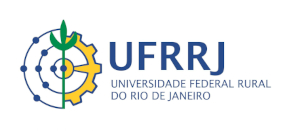Please use this identifier to cite or link to this item:
https://rima.ufrrj.br/jspui/handle/20.500.14407/22034| Tipo do documento: | Tese |
| Title: | Entre a valentia do boi e as fibras do sisal: narrativas e imagens de velhos agricultores sobre seu ambiente |
| Other Titles: | Between the bull’s bravery and the sisal’s fibers: elderly agriculturists’ narratives and pictures about their environment. |
| Authors: | Freixo, Alessandra Alexandre |
| Orientador(a): | Carneiro, Maria José Teixeira |
| Primeiro membro da banca: | Carneiro, Maria José Teixeira |
| Segundo membro da banca: | Comerford, John Cunha |
| Terceiro membro da banca: | Costa , Luiz Flávio de Carvalho |
| Quarto membro da banca: | Peixoto, Clarice Ehlers |
| Quinto membro da banca: | Rua, João |
| Keywords: | Memória coletiva;representação;região sisaleira;fotografia;ruralidade;collective memory;representation;sisal region;photography;rurality |
| Área(s) do CNPq: | Sociologia |
| Idioma: | por |
| Issue Date: | 30-Mar-2010 |
| Publisher: | Universidade Federal Rural do Rio de Janeiro |
| Sigla da instituição: | UFRRJ |
| Departamento: | Instituto de Ciências Humanas e Sociais |
| Programa: | Programa de Pós-Graduação em Ciências Sociais em Desenvolvimento, Agricultura e Sociedade |
| Citation: | FREIXO, Alessandra A. Entre a valentia do boi e as fibras do sisal: narrativas e imagens de velhos agricultores sobre seu ambiente. 2010. 265 f. Tese (Doutorado de Ciências Sociais em Desenvolvimento, Agricultura e Sociedade) - Instituto de Ciências Humanas e Sociais, Universidade Federal Rural do Rio de Janeiro, Seropédica, 2010. |
| Abstract: | Nesta tese, viso compreender as distintas representações e imagens que velhos agricultores do município de Valente (BA) produzem sobre o lugar em que vivem e como estas mediam suas relações no ambiente. Focando as diferentes narrativas, imagens e representações do rural produzidas por velhos agricultores, discuto o surgimento de uma nova ruralidade na região, associada à exploração da cultura do sisal, a partir da década de 1950, conformando o que denominei “ruralidade sisaleira”. Chamo a atenção para a diversidade de marcadores de espaços-tempos vividos, expressos nas narrativas apresentadas, dentre os quais se destacam: o “trabalho da terra”, a comunidade, o sisal e a seca. Em articulação à análise das narrativas produzidas pelos velhos, procedi uma leitura de um conjunto de fotografias que registram diferentes momentos e circunstâncias da vida de velhos agricultores, a fim de, em diálogo com as narrativas do passado, incorporar os registros fotográficos como elementos fundamentais para compreender o processo constitutivo de identidades na região e no grupo. Nas narrativas e imagens produzidas pelos velhos agricultores destaca-se o papel fundamental da família na engrenagem da comunidade, forte elemento na constituição de sua identidade e enraizamento. Este forte apego à família se expressa também em grande parte das fotografias apresentadas nesta tese, sejam as produzidas por mim, ou ainda aquelas pertencentes ao acervo dos velhos ou por eles produzidas. Neste sentido, vale destacar o papel fundamental que a própria fotografia tem assumido para os velhos, como elemento materializador da memória familiar, o que certamente contribui para o fortalecimento da sociabilidade da família. Dado esse papel crucial da fotografia na construção da memória da família, os velhos, em suas produções fotográficas, registraram, em sua maioria, fotos que tinham a família como principal elo de significação, em que pese a relativa escassez de fotografias do tipo retrato, bem como uma importante distinção de gênero percebida nos registros. Em que pese a forte presença do sisal no cotidiano das pessoas do lugar, chegando a forjar uma suposta “vocação” para esta cultura no lugar, surpreende sua invisibilidade para os velhos, quando retratam o cotidiano em sua propriedade, a partir dos registros fotográficos. Os velhos, tendo privilegiado os espaços domésticos e os lugares de produção da memória familiar, como a casa, as plantas e os animais de estimação, centram sua topofilia nesses lugares de memória, uma vez que a afetividade parece emergir como uma importante chave de leitura do ambiente. As interpretações aqui explicitadas oferecem pistas valiosas sobre a possibilidade concreta do recurso à memória coletiva como estratégia de ressignificação dos velhos em seu lugar e de compreensão de suas relações em seu ambiente. Reconhecer o relato dos velhos como fonte privilegiada na construção da história significa colocar no centro da cena homens e mulheres comuns, anônimos, que tecem caprichosamente uma multiplicidade de relações que ultrapassa o binômio ruralurbano. |
| Abstract: | In this thesis, I aim to comprehend the different representations and pictures that elderly agriculturists from the town of Valente (BA) produce about the place where they live and how these representations and pictures mediate their relations with the environment. Focusing on the different narratives, pictures and representations of rural produced by elderly agriculturists, I discuss the emerging of a new rurality in the region, associated to the exploration of the sisal culture, since the 1950’s, compounding what I nominated “sisal rurality”. I call the attention to the diversity of time-space lived marks, which are evident in the presented narratives, and among the marks there are some highlights: “earth work”, the community, the sisal and the drought. Articulated with the analysis about the narratives produced by elderly, I made a reading exercise about a group of photography pictures which register different moments and circumstances of elderly agriculturists’ life in order to, in a dialogue with the narratives about the past, incorporating the photographic registers as fundamental elements to comprehend the constituting process of identities in the region and in the group. In the narratives and in the pictures produced by elderly agriculturists, the family role is highlighted in the community gears as a strong element in the constitution of their identity and settling. The strong link to the family is also evident in most of the photographies presented in this thesis, either the ones taken by me or even the ones from the elderly piles or taken by them. This way, it is relevant to highlight the fundamental role that the photography itself has been assuming for the elderly, as a materializer element of the family memory, what surely contributes for the strengthening of the family sociability. Because of the crucial role of photography in the construction of the family memory, the elderly, in their photographic productions, register mostly pictures which had the family as the main bound of meaning, considering the scarcityof portrait photoghaphies, as well as an important dinstiction of genre noticed in the registers. Considering the great presence of sisal in the daily routine of people in that place, forming a supposed “vocation” for that culture in the place, its invisibility by the elderly, when they register their daily routine in their property using the photography, is a surprise. The elderly - focusing mainly on their home spaces and the places where the family memory is produced, like the house, the plants and the pets – center their topophilia in the places of memory, once the affectivity seems to emerge as an important key for reading the environment. The interpretations shown here offer valuable hints about the concrete possibility of evoking the collective memory as a strategy for re-meaning the elderly in their place and for the comprehension of their relations in the environment. Recognizing the elderly reports as a privileged source for the History construction means to put in center of the attentions ordinary and anonymous men and women who establish carefully a multiplicity of relations which trespass the binomial rural-urban. |
| URI: | https://rima.ufrrj.br/jspui/handle/20.500.14407/22034 |
| Appears in Collections: | Doutorado em Ciências Sociais em Desenvolvimento, Agricultura e Sociedade |
Se for cadastrado no RIMA, poderá receber informações por email.
Se ainda não tem uma conta, cadastre-se aqui!
Files in This Item:
| File | Description | Size | Format | |
|---|---|---|---|---|
| 2010 - Alessandra_alexandre_freixo.pdf | 3.1 MB | Adobe PDF |  View/Open |
Items in DSpace are protected by copyright, with all rights reserved, unless otherwise indicated.

